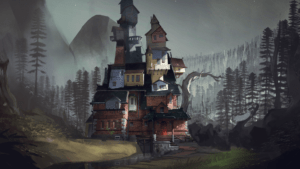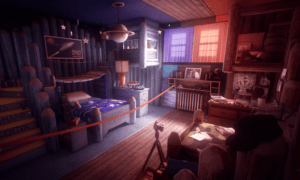For this critical play, I played What Remains of Edith Finch. This game was designed by Ian Dallas, developed by Giant Sparrow, and published by Annapurna Interactive.

This walking simulation consists of exploring the Finch family’s abandoned house, discovering the stories of generations of family members. The target audience could be teenagers/ young adults or anyone who is curious enough to want to uncover the story. I would say it is not meant for young children because they wouldn’t have the patience or attention to detail to find the clues and follow the narrative.
Narrative, exploration, and challenge play a role in making this game fun. The story begins through Edith Finch’s diary, narrating her return to the abandoned house and following with the stories of each of the family members as the player begins to explore the rooms and corridors of the house, interacting with the objects they find and observing the details and clues they contain. There is challenge in identifying that a seemingly insignificant detail is indeed an important clue and paying attention to aspects of the environment that can go unnoticed. The minigames that unlock different rooms or clues also add challenges that give a feeling of reward when you move past an obstacle and move forward in the story.

The designers rely on different mechanics to allow the players to explore their environment. Walking from room to room allows the player to traverse the house. However, some rooms are initially locked, and by allowing players to look through the door lock, the designers allow the players to have an initial surface exploreation and uncover some context before being able to dig deeper into the clues available in that room and interact with the objects once they find a key to the room. This foreshadowing effect is used at multiple points in the game, as many rooms offer the possibility of interacting with objects only after a part of the story is revealed and the player observes the room in detail. This adds mystery and also helps the player be meticulous in their exploration instead of rushing through the rooms.

I loved the way in which we transition seamlessly from one character to the next, getting to experience the environment through different perspectives, including the perspective of an animal, that moves differently and sees a different version of the world to the one we are used to. The way different voices were used to transition into the story of different characters was also very smooth, and it helped tell the story in a very natural way.
This was my first time playing a walking sim game and I loved it! However, perhaps because I’m new at this, I found it a bit hard to understand the controls initially. I think giving players some instructions explaining the different ways they can interact with the environment would make it easier to get started, especially for inexperienced players like me.



